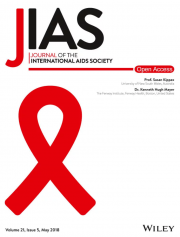Posted on February 20, 2017
Source: Journal of the International AIDS Society

Supporting HIV prevention and reproductive goals in an HIV-endemic setting: taking safer conception services from policy to practice in South Africa
Davies NE, Matthews LT, Crankshaw TL, Cooper D, Schwartz SR
INTRODUCTION:
Safer conception care encompasses HIV care, treatment and prevention for persons living with HIV and their partners who desire children. In 2012, South Africa endorsed a progressive safer conception policy supporting HIV-affected persons to safely meet reproductive goals. However, aside from select research-supported clinics, widespread implementation has not occurred. Using South Africa as a case study, we identify key obstacles to policy implementation and offer recommendations to catalyse expansion of these services throughout South Africa and further afield.
DISCUSSION:
Four key implementation barriers were identified by combining authors' safer conception service delivery experiences with available literature. First, strategic implementation frameworks stipulating where, and by whom, safer conception services should be provided are needed. Integrating safer conception services into universal test-and-treat (UTT) and elimination-of-mother-to-child-transmission (eMTCT) priority programmes would support HIV testing, ART initiation and management, viral suppression and early antenatal/eMTCT care engagement goals, reducing horizontal and vertical transmissions. Embedding measurable safer conception targets into these priority programmes would ensure accountability for implementation progress. Second, facing an organizational clinic culture that often undermines clients' reproductive rights, healthcare providers' (HCP) positive experiences with eMTCT and enthusiasm for UTT provide opportunities to shift facility-level and individual attitudes in favour of safer conception provision. Third, safer conception guidelines have not been incorporated into HCP training. Combining safer conception with "test-and-treat" training would efficiently ensure that providers are better equipped to discuss clients' reproductive goals and support safer conception practices. Lastly, HIV-affected couples remain largely unaware of safer conception strategies. HIV-affected populations need to be mobilized to engage with safer conception options alongside other HIV-related healthcare services.
CONCLUSION:
Key barriers to widespread safer conception service provision in South Africa include poor translation of policy into practical and measurable implementation plans, inadequate training and limited community engagement. South Africa should leverage the momentum and accountability associated with high priority UTT and eMTCT programmes to reinvigorate implementation efforts by incorporating safer conception into implementation and monitoring frameworks and associated HCP training and community engagement activities. South Africa's experiences should be used to inform policy development and implementation processes in other HIV high-burden countries.